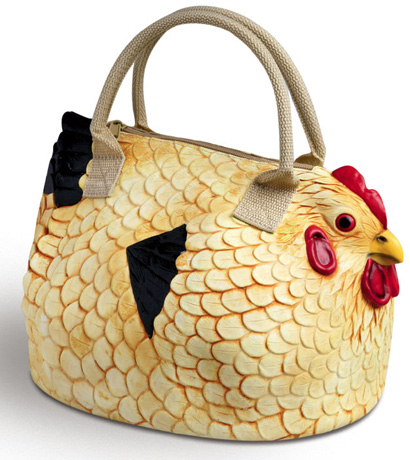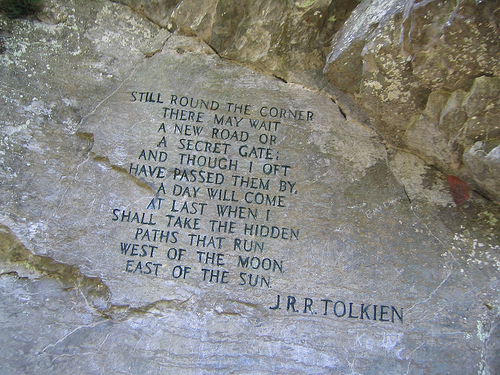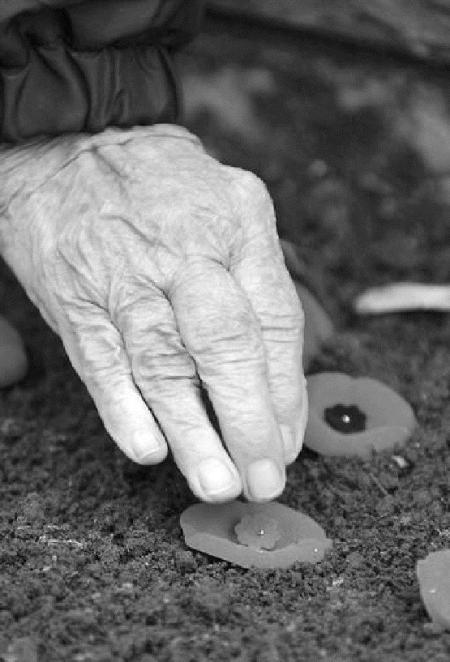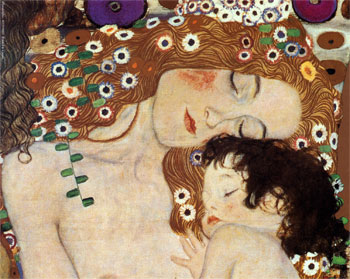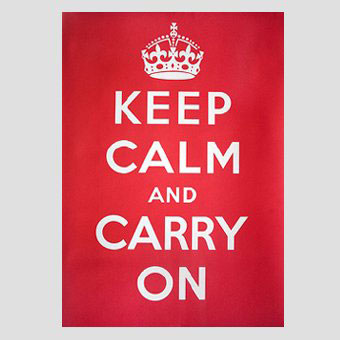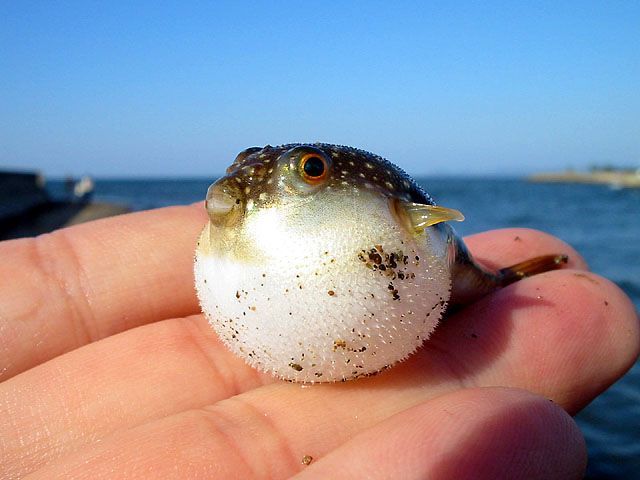|
« October 2007 | Main | December 2007 » November 30, 2007November 29, 2007Thursday Thirteen # 32: a collection of collective nouns, thirteen to be exact In keeping with the recent trend of naming groups of things, I bring you a sampling of colourful collective nouns. Feel free to add your own! 1. A group of academics is a faculty 2. One of aldermen is called a bench 3. Of arsonists, a conflagration 4. Of Barmen, a promise 5. A group of boys is called a blush 6. Of barbers, a babble 7. A bevy or galaxy of beauties 8. A goring of butchers 9. A sneer of butlers 10. A group of capitalists are called a syndicate 11. A school of clerks 12. And a shrivel of critics 13. Finally, at least for this week’s Thursday Thirteen: A stalk of foresters.
November 28, 2007Watch: Jesus Figurines by FishermenNovember 27, 2007Read: Apologies All Around
From the American Scholar, an article by Gorman Beauchamp writing about today’s tendency to make amends My favorite apology so far, however, appeared in a brief Reuters account. “Villagers of the tiny settlement of Nubutautau [Fiji] wept as they apologized to the descendants of a British missionary killed and eaten by their ancestors 136 years ago,” the news agency reported. “The villagers and the relatives of the missionary, the Rev. Thomas Baker, were taking part in a complex ritual intended to lift a curse the locals say has caused an extended run of bad luck.” A cow was slaughtered and kisses given to the 11 relatives of the missionary by the village chief, Ratu Filimoni Nawawabalavu, “a descendant of the chief who cooked the missionary.” No word on whether the curse lifted.
the addict? go figureNovember 26, 2007The stories behind some of literature's best-known novelsWould ‘Catch-22’ still be a masterpiece if it was called ‘Catch-18’? Why did T S Eliot change the name of ‘He Do the Police in Different Voices’ to ‘The Waste Land’? Gary Dexter tells the stories behind some of literature’s best-known novels Catch-22 (1961) There are no catches 1 to 21, or 23 onwards, in the book. “There was only one catch and that was Catch-22.” Like the final commandment left at the end of Animal Farm, “Catch-22” is an entire rule book distilled into one lunatic decree. Its very uniqueness meant that Heller had to think carefully before naming, or numbering it. And his choice was – Catch-18. In the Second World War, Heller was a bombardier with the 12th Air Force, based on Corsica, and flew 60 missions over Italy and France. Yossarian in Catch-22 is a bombardier flying the same missions. In 1953, Heller began writing a book called Catch-18, the first chapter of which was published in the magazine New World Writing in 1955. When, three years later, he submitted the first large chunk of it to Simon & Schuster, it was quickly accepted for publication, and Heller worked on it steadily – all the time thinking of it as Catch-18 – until its completion in 1961. Shortly before publication, however, the blockbuster novelist Leon Uris produced a novel entitled Mila 18 (also about the Second World War). It was thought advisable that Heller, the first-time novelist, should be the one to blink. Heller said in an interview with Playboy in 1975: “I was heartbroken. I thought 18 was the only number.” A long process of numerical agonising began in which the author and his editor at Simon & Schuster, Robert Gottlieb, worked their way through the integers looking for the right, the unique formula. Catch-11 was one of the first suggestions, but was rejected because of the film Ocean’s Eleven. Heller at one point settled firmly on Catch-14, but Gottlieb threw it out for being too nondescript. When 22 came up, Gottlieb felt it had the right ring: “I thought 22 was a funnier number than 14,” he told the New York Times Review of Books in 1967. Heller took two weeks to persuade. But the journey from 18 to 22, although tortuous, was worth making. The reason is this: 22 has a thematic significance that 18 and most of the other choices do not. In Catch-22, everything is doubled. Yossarian flies over the bridge at Ferrara twice, his food is poisoned twice, there is a chapter devoted to “The Soldier Who Saw Everything Twice”, the chaplain has the sensation of having experienced everything twice, Yossarian can name two things to be miserable about for every one to be thankful for, all Yossarian can say to the dying Snowden is, “There, there”, all Snowden can say is: “I’m cold, I’m cold”, Yossarian overhears a woman repeatedly begging “please don’t, please don’t”, and Major Major is actually Major Major Major Major. Doubling is thus a stylistic device suggestive of the qualified nature of reality. Nothing is singular, unblurred or unambiguous. The title, with its doubled digits (2 representing duality, itself doubled to make 22) conveys this in a way that Catch-18 could never have done. It seems clear therefore that what happened when Simon & Schuster found out about Leon Uris’s book was a piece of great good luck. For the complete article.
November 24, 2007B.W.O. - love this
* Because you shouldn’t have to look at your blog like it is a treadmill. 
a kaleidoscope of butterflies and an ostentation of peacocksMore peculiar names for groups of animals, insects and invertebrates. Did you know: • a group of apes is called a shrewdness • one of barracudas a battery • one of monkeys a troop • one of butterflies a kaleidoscope • one of owls a parliament • one of peacocks an ostentation • one of cobras a quiver • one of penguins a rookery • one of eagles a convocation • one of jellyfish a smack • one of goldfish a troubling • one of sharks a shiver • one of porcupines a prickle • and, a group of zebras are called a zeal.
November 23, 2007Think about: Buy Nothing Christmas Adbusters CampaignAre you dreading the holiday season, especially the madness associated with shopping? Buy Nothing Christmas is not really about refusing to spend a dime over the holiday season. It’s about taking a deep breath and deciding to opt out of the hype‚ the overcrowded malls‚ and the stressful to–do lists. It’s about reminding ourselves to really think about what we are buying‚ why we are buying it‚ and whether we really need it at all.
Read: Geometry is allA shape could describe the cosmos and all it contains ONE of the mysteries of the universe is why it should speak the language of mathematics. Numbers and the relationships between them are, after all, just abstract reasoning. Yet mathematics has shown itself to be particularly adept at describing both the contents of the universe and the forces that act on them. Now comes a paper which argues that one branch of the subject—geometry—could form the basis of all the laws of physics. From the Economist print edition.
November 22, 2007Thursday Thirteen #31 - Every saint has a past & every sinner a future: famous quotes by Oscar Wilde 1. A cynic is a man who knows the price of everything but the value of nothing. 2. A little sincerity is a dangerous thing, and a great deal of it is absolutely fatal. 3. A man can’t be too careful in the choice of his enemies. 4. A man’s face is his autobiography. A woman’s face is her work of fiction. 5. A work of art is the unique result of a unique temperament. 6. All bad poetry springs from genuine feeling. 7. Art is the most intense mode of individualism that the world has known. 8. Beauty is a form of genius - is higher, indeed, than genius, as it needs no explanation. It is of the great facts in the world like sunlight, or springtime, or the reflection in dark water of that silver shell we call the moon. 9. Between men and women there is no friendship possible. There is passion, enmity, worship, love, but no friendship. 10. Children begin by loving their parents; after a time they judge them; rarely, if ever, do they forgive them. 11. Deceiving others. That is what the world calls a romance. 12. Every saint has a past and every sinner has a future. 13. Experience is simply the name we give our mistakes. And, a small bonus gift for my writer friends:
November 21, 20075 to add to your bookshelfGetting Unstuck Without Coming Unglued: A Women’s Guide to Outsmarting Procrastination, Writer’s Block, and Other Obstacles to Living a Creative Life (Seal Press, July 2007) by Susan O’Doherty. Psychotherapist Susan O’Doherty offers advice about how to avoid major psychological roadblocks to the creative process that many women face. Chapters include “What We Learned at Home,” The Impossible Position: Managing Motherhood and Creativity,” and “Damned if We Do: ‘Fear of Success.’” Before We Get Started: A Practical Memoir of the Writer’s Life (Ballantine Books, January 2005) by Bret Lott. Best-selling author Bret Lott meditates on his writing life in these ten essays. Lott discusses topics like rejection, publication, and humility, employing thoughtful and often humorous anecdotes from his life as well as advice from writers like James Baldwin, Henry James, and John Gardner. The Forest for the Trees: An Editor’s Advice to Writers (Riverhead Books, 2000) by Betsy Lerner. This guide, written by the former executive editor of Doubleday, contains six amusing chapters about different types of writers (such as the swashbuckling drunkard) intended to correct problems in would-be authors who fall into these categories and six more on practical publication matters. From Where You Dream: The Process of Writing Fiction (Grove Press, April, 2005) by Robert Olen Butler and edited by Janet Burroway. This guide to writing fiction features the lectures of Pulitzer Prize-winning novelist Robert Olen Butler on general topics, such as getting into the mind set of writing and the cinema of the mind, to more specific subjects, such as writing exercises and the analysis of short stories. The Midnight Disease: The Drive to Write, Writer’s Block, and the Creative Brain (Houghton Mifflin, 2004) by Alice W. Flaherty. Penned by a practicing neurologist, this guide investigates the neurological processes that cause and accompany writing. It includes chapters on topics such as creativity, hypergraphia (the overwhelming desire to write), and writers’ block. Flaherty discusses famous writers (including Dostoevsky and Hemingway) who may have been afflicted by brain disorders alongside modern-day patients and studies.
SolitudeNovember 20, 2007Read: How the Truth Gets Framed by the CameraThink about the photographs in our lives, the ones we keep on our desks, load on Facebook, take with cellphones and digital cameras, and attach to e-mail messages. Although the word may now be out of fashion, for nearly 100 years these images were known as snapshots. That term, however, covers some very different kinds of photographs — and some very different meanings they have for us. Indeed, in recent years, scholars and curators have been drawn to unpacking those meanings in a thriving study and display of images. It should not surprise us that this subject has become a growing focus of interest. There has been a revolution in the past decade in digital imaging and visual technology. We live in a world of pixels — picture elements — not only on our monitors but also in our everyday lives. Ours is as much a visual culture as a written or oral one, and of late, images, more than print and speech, have had the greatest impact: Visualize Katrina, Abu Ghraib, 9/11. The complete article by LOUIS P. MASUR can be found at the Chronicle Review Online.
November 19, 2007What's ugly? : Food for ThoughtIs it the flip-side of beautiful? Depends on who’s doing the looking. By Umberto Eco In every century, philosophers and artists have supplied definitions of beauty, and thanks to their works, it is possible to reconstruct a history of aesthetic ideas over time. But this did not happen with ugliness. Most of the time, ugliness has been defined as the opposite of beauty. But almost no one ever devoted a treatise of any length to it. Go to the LA times for the full opinion editorial.
November 18, 2007November 17, 2007In need of fresh ideas?Join idea-sandbox.com. Membership gets you a cool card and lots of tips and tricks to jump-start your creativity. 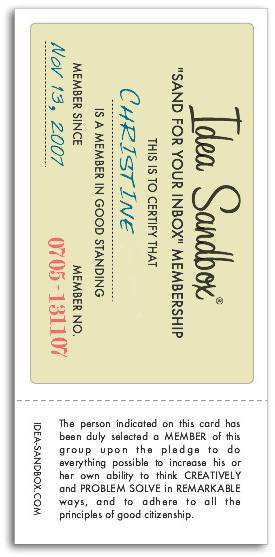
November 16, 2007As boundless as the sea: a quote for devNovember 15, 2007Wedding AnniversaryNovember 14, 2007Writers don't make up mythsWRITERS don’t make up myths; they take them over and recast them, so begins the article, On Myth, in the Liberal by Marina Warner. Even Homer was telling stories that his audience already knew. If some individuals present weren’t acquainted with Odysseus’s wanderings or the Trojan War, and were listening in for the first time (as I was when a child, enthralled by the gods and goddesses in H.A. Guerber’s classic retelling), they were still aware that this was a common inheritance that belonged to everyone. Its single author – if Homer was one at all – acted as a conduit of collective knowledge, picking up the thread and telling it anew. I consider this essay essential for readers and writers. What are your thoughts?
November 13, 2007Time well spent: another blue pyramid quiz
Fresh Eggs: scribblings and other such scratches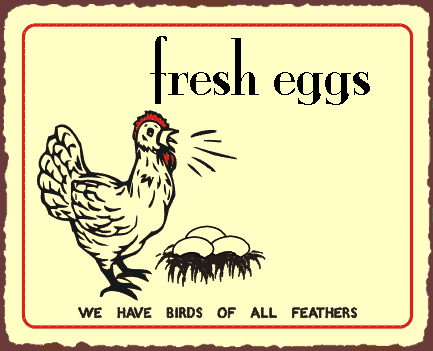 With apologies to Thomma-Lyn who has been waiting patiently for me to answer my interview questions from some time ago; my adult life commitments have been encroaching on my writing/blogging life. I took a personal day off today to catch up on my overdue paperwork and on spend some time writing, just for me – and well, for TL (smile). Here’s the first question: Tell me about chickens. Which came first, your little girl Chicken or the literary Chicken-scratch? And what, for you, is the symbolism of each and in what way do the two Chickens tie together for you?As a little girl, I was fascinated by my father’s signature. His penmanship was perfect. He signed his name with precision and delicate symmetry. He created a masterpiece using a simple ballpoint pen. His signature was in stark contrast to his daily scribblings. You see: my father had the equivalent of a grade nine education. When he immigrated to Canada in the 1950s, he spoke and read no English. He took ESL classes in the basement of church hall in Montreal in order to pass his citizenship test. It was in Montreal, during those first few years in his new country, that he perfected his signature. I used my father’s citizenship lessons as the basis for the “A Lesson in Calligraphy” chapter in Saints and Cigarettes. The chicken-scratch theme evolved out of the conversation that Georgios and Magda have about writing. And when I decided to start a writing blog, chicken-scratch seemed a natural fit. My beloved Mama used to call me her little chicken, much in the same way that her mother, my yiayia, called her. And so, when EM was born, I did the same. In Greek tradition, it’s bad luck to call babies by their given names until they are baptized. Now that EM is two (and very verbal) if you ask her what animal she is, she’ll say “chicken/kotopoulo.” Both the literary chicken and my baby chick share the same bloodline. For my dear little chicken EM, I want her to know, cherish and celebrate her lineage. Chicken-scratch in its inception was meant to be a forum to share my manuscript with a larger audience. In many ways, I wanted to give a voice to my parent’s experiences. I am a writer and a storyteller because of them. Chicken-scratch is a virtual scrapbook. I post bits and pieces that feed my writing life. While I haven’t been sharing much of my manuscript, my posts online make my off-line writing stronger. The beauty of a blog is that its form and content are fluid. Through chicken-scratch, I’ve met and formed deep connections with other writers who inspire and motivate me. And for that, I am eternally grateful.
November 12, 2007A string of ponies and a skein of geeseDid you know that: • A group of magpies is called a tiding • one of ravens an unkindness • one of turtledoves a pitying • one of starlings a murmuration • one of swans a lamentation • one of ponies a string • one of rattlesnakes a rhumba • one of crows a murder • one of cobras a quiver • one of foxes a skulk • one of emus a mob • one of elks a gang • one of cats a clowder • one of flamingoes a pat • and, one of bears a sleuth. • Groups of geese have two names - on the ground, they are called a gaggle; in the air they are called a skein. For more interesting facts.
November 11, 2007November 10, 2007In Flanders Field
In Flanders fields the poppies blow Take up our quarrel with the foe: ~ John McCrae (1872-1918)
Remembrance Day 2007 - Lest we forget: In depth report from CBC. During the First World War (1914-1918), more than 600,000 Canadian soldiers volunteered to go overseas. As of November 2007, only one was still alive — John Babcock, 107, who was born on an Ontario farm and now lives in the United States.
November 9, 2007Do you know Jan Oliver?I discovered Jan Oliver’s artwork while doing an online search on the Chimayo Pilgrimage (New Mexico). She’s written a book ” Paint Your Soul” for the young at heart that I’ve added to my list of must reads. Her images are open and inviting, full of life and light. This one is called “Our Lady of Guadalupe” ~
And this one ~ “Wedding at Chimayo”
November 8, 2007Thursday Thirteen # 30 - Because I could not stop for Death For this week’s Thursday Thirteen, I post thirteen of my favourite quotes on death. As my regular readers know, I have been revisiting my beloved mama’s passing. It’ll be one year on November 26. I finally confirmed her memorial service with the Greek church here in Victoria. The service will take place on Sunday, November 18. To those of you who do leave comments, know that I read each and every one and cherish your responses. I will be visiting soon, I promise. 1. God pours life into death and death into life without a drop being spilled. ~Author Unknown 2. People do not die for us immediately, but remain bathed in a sort of aura of life which bears no relation to true immortality but through which they continue to occupy our thoughts in the same way as when they were alive. It is as though they were traveling abroad. ~Marcel Proust 3. Because I could not stop for Death, 4. While I thought that I was learning how to live, I have been learning how to die. ~Leonardo Da Vinci 5. Life is better than death, I believe, if only because it is less boring, and because it has fresh peaches in it. ~Alice Walker 6. The day which we fear as our last is but the birthday of eternity. ~Seneca 7.Our death is not an end if we can live on in our children and the younger generation. For they are us, our bodies are only wilted leaves on the tree of life. ~Albert Einstein
8.Death may be the greatest of all human blessings. ~Socrates 9. We understand death for the first time when he puts his hand upon one whom we love. ~Madame de Stael 10. People living deeply have no fear of death. ~Anais Nin, Diary, 1967 11. For what is it to die, 12. Life and death are balanced on the edge of a razor. ~Homer, Iliad 13. Oh, for the time when I shall sleep
November 7, 2007rules to live byNovember 6, 2007Sometimes I just love Susan Miller
For her monthly readings on astrologyzone.com.  It’s birthday month, and you’re feeling excited. Romance is in the air and life seems as close to ideal as you’ve ever seen it. Planets creating a near-perfect triangle pattern will work in unison to help create quite a bewitching time for you. Exciting romantic episodes and foreign travel will combine to create a month to remember for a long time - even forever. In the few days that follow that new moon, you’ll be ready to tell the universe what it is that you really want - and get it. Love with someone near will be true and deep now, and you will have the capability to feel the full extent of life’s pleasures. You may now get engaged or wed for your birthday - if this hasn’t just recently happened, it would be an ideal time. Later, when Uranus turns direct on November 24 your social life will take off, and single Scorpios who have been saying there have been “slim pickings” out there will be delighted at the more substantial types that will show up. If things have been a bit dull, they won’t be that way for long! Uranus has been out of phase since June 23, but will now move in a strong, sure course. Your weeks and months ahead will be chock full of wonder and light. There will be so many days to enjoy ahead! Foreign travel is also such a strong possibility that if you’re not flying to a faraway land for a honeymoon, it surely could be that you’re planning a trip for another reason. Mars, your ruler, will go retrograde on November 15, so try to go during the first half of the month when your journey will be more enjoyable and productive. If you are dealing with business interests abroad, the same rule applies - make a push for closure early in the month. Later, from November 15 to January 30, spend time reassessing your projects and delay on key actions. Certain financial deals and maneuvers will mark the time around the full moon, November 24. If you are to wed soon, you may be changing your name on your credit cards and generally deciding how to merge funds. If you need funds to buy a house, or to go to college, or start a business, an answer from your banker, financial aid advisor, or venture capitalist could please you at this time. While you may have to pay money out, you have a wonderful chart for seeing more flow in. There is no reason to be too concerned. Dear Scorpio, the world is your oyster!
November 5, 2007sex, death and ratingstogether again
It gives me great solace imagining that my mom and dad have been reunited in death. In their 42 years of marriage, they walked everywhere together, always holding hands. My father opened doors for my mother and polished her shoes. And my mother made sure my father was well dressed; his shirts and pants neatly pressed.
November 4, 2007Down the rabbit holeWe are coming up to the one year anniversary of my beloved Mama’s passing on November 26. In Greek tradition, this is considered the end of the formal mourning period. For the one year memorial, I have been tasked with organizing a prayer service. Our relatives in Vancouver want the mnemosino to take place at St. George’s Cathedral. I don’t want to say goodbye. There’s not a day that goes by that I don’t think about her; that I don’t miss her; that I long to hear her sweet voice and have her call me “kotoula mou” - my little chicken - in much that say way that I call EM. Coming to grips with the loss of one’s parents is the final act of individuation. I don’t know if I’m ready to be an adult just yet. I came across these photos taken before our trip to Europe when Mama was still able to leave her room at Mount Saint Mary’s and there were still those small bright moments of lucidity. They are among my dearest possessions.
“Life is not the greatest good. Death is not the greatest evil. We are all going to pass. Not one of us will remain here. We are not citizens of this world but citizens of Heaven. This is not our true home. We are merely passing through. Our true home is Heaven.” ~ Saint Paul
November 3, 2007The Feminine Critique: Women and BusinessAm wondering why the New York Times decided to print an article on women and business in the style section? Click on the link below to read the entire article. Why is it that a woman’s ability in the workplace is paired with her fashion sense? And is true as Lisa asserts in the article that women can’t win? The Feminine Critique ~ By LISA BELKIN, New York Times, November 1 2007. DON’T get angry. But do take charge. Be nice. But not too nice. Speak up. But don’t seem like you talk too much. Never, ever dress sexy. Make sure to inspire your colleagues — unless you work in Norway, in which case, focus on delegating instead.
November 2, 2007Bring back the Greek gods
I came across this article by Mary Lefkowtiz on latimes.com (link is below). Do you agree with her comments that monotheism “poisons” human life?
Prominent secular and atheist commentators have argued lately that religion “poisons” human life and causes endless violence and suffering. But the poison isn’t religion; it’s monotheism. The polytheistic Greeks didn’t advocate killing those who worshiped different gods, and they did not pretend that their religion provided the right answers. Their religion made the ancient Greeks aware of their ignorance and weakness, letting them recognize multiple points of view.
November 1, 2007Thursday Thirteen # 29 - Where's Waldo? Red did a similar Thursday Thirteen post some time ago and it was an eye-opener. Curious to learn where in the world readers are coming from I checked Google analytics and discovered the simple, startling truth that the blogosphere is a global village. Below are the top thirteen countries. Where in the world are you from dear reader? 1. United States View More Thursday Thirteen Participants
|




